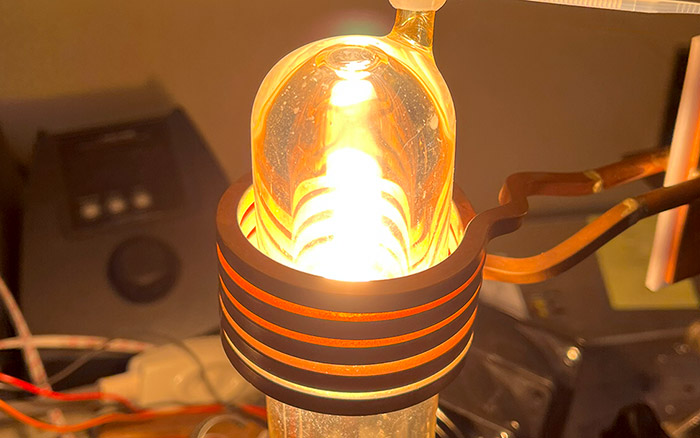Researchers have developed a new method for analysing nitrogen in carbon materials. The technique, published on April 29, 2024 in Chem, could lead to major improvements in energy efficiency and effectiveness.
Nitrogen-doped carbon materials are carbon-based substances with nitrogen atoms intentionally embedded in their structure. These materials could replace platinum in various energy applications, making them more affordable and sustainable.
“Carbon atoms usually bond in a stable and predictable manner,” explains Takeharu Yoshii from Tohoku University’s Institute of Multidisciplinary Research for Advanced Materials, who led the study. “When nitrogen atoms replace some of the carbon atoms, they form new chemical bonds that alter the material’s properties, improving its electrical conductivity, stability, and catalytic performance.”
In this study, researchers from Tohoku University and the University of British Columbia developed tools to better understand how nitrogen atoms integrate into carbon structures. Traditional methods for analysing nitrogen in carbon materials face limitations. One method provides information on the overall nitrogen content but not how the atoms are bonded within the material, while another can provide information about the chemical state and bonding of nitrogen atoms but is limited to analysing the material’s surface.
To overcome these limitations, the research team developed a technique called ultra-high-temperature Temperature-Programmed Desorption (TPD). Samples are gradually heated to an extreme 2,100°C, and the gases released are analysed. The high temperatures make the tightly-bonded nitrogen atoms in carbon materials begin to desorb–meaning they are released from the material.

Photograph of the TPD system in operation at 2,100°C. Courtesy of Tohoku University. ©Takeharu Yoshii et al.
The new technique offers a comprehensive analysis of nitrogen, including its chemical bonding state, with 100 times more sensitivity than traditional methods. This advance enables the detection of very low nitrogen levels and provides detailed insights into the material’s properties. This more detailed and accurate characterization of nitrogen-doped carbon materials could accelerate the development of next-generation energy materials, such as more efficient catalysts for fuel cells.
“The ability to detect trace levels of nitrogen is also crucial for solving industrial challenges like ‘puffing’ in graphite electrode manufacturing, where uncontrolled expansion occurs due to trace nitrogen in raw materials,” says co-author Robert Karoly Szilagyi of the University of British Columbia, “Previously, no method could effectively analyse these trace nitrogen levels, but TPD enables precise measurement, potentially mitigating puffing and improving graphite electrode quality.”
Hirotomo Nishihara from the Advanced Institute for Materials Research at Tohoku University adds that “TPD’s utility extends beyond nitrogen-doped carbon materials. It can be adapted to analyse other dopants such as sulphur, phosphorus, and boron in carbon materials.”
TPD can also be used to analyse other materials, including oxides, nitrides, and carbides. This versatility suggests that it could become a standard tool in materials science, offering valuable insights across various industries. The researchers are now actively seeking collaborations to apply TPD to diverse samples, aiming to drive innovation and address industrial challenges, ultimately leading to more efficient and cost-effective energy solutions.
Publication Details
“Quantitative and qualitative analysis of nitrogen species in carbon at the ppm level”
Takeharu Yoshii,* Ginga Nishikawa, Viki Kumar Prasad, Shunsuke Shimizu, Ryo Kawaguchi, Rui Tang, Koki Chida, Nobuhiro Sato, Ryota Sakamoto, Kouhei Takatani, Daniel Moreno-Rodríguez, Peter Škorňa, Eva Scholtzová, Robert Karoly Szilagyi,* and Hirotomo Nishihara*
Chem
DOI:10.1016/j.chempr.2024.03.029



Contact
Advanced Institute for Materials Research (WPI-AIMR)
Email: takeharu.yoshii.b3[at]tohoku.ac.jp
Website